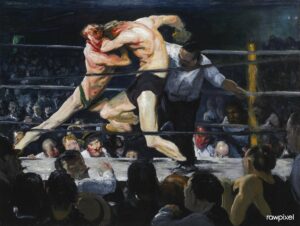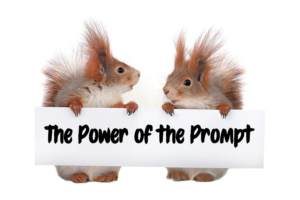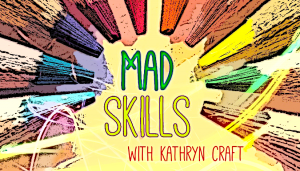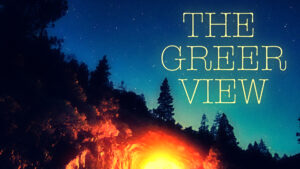Process
I keep three plants in my study. They sit by the window and breathe greenery into my soul whenever I’m nearby. Two of these three plants are of the low-maintenance type I prefer. Like children, they thrive with a bit of benign neglect. They take it in stride (in root?) if I forget to water for a week or two, and only offer some mild crisping around the edges to let me know that they’re thirsty.
The third, though? It complains bitterly. If I don’t water it as often as it thinks I ought, all of its stems and leaves dramatically droop over the course of mere hours, so that the entire plant collapses to half its normal height. On more than one occasion, I have entered the room to find it flopped like a professional soccer player, or an exhausted prima donna at the end of her starring performance. On those days, I have been known to tell it out loud, “Stop being so melodramatic!”
Thus far, the plant has not responded as desired.
Meanwhile, across the room at my computer, the seedling of my current novel has taken tentative root. It sprouts from the rich soil of a catastrophe in the life of my main character; without careful pruning, the tendrils of its high drama will choke out everything subtle or slight. How do I start from such an opening without writing melodramatically?
I’m not sure. (Hence this post.) In fact, I’m still exploring why “melodrama” is such a bad word in the first place. For all its excess, melodrama taps into real emotion, and people want real emotion. Soap operas wouldn’t make up seven of the ten longest-running shows on television if they didn’t touch hordes of faithful viewers who want exactly what they offer. Romance wouldn’t be the bestselling category in fiction if its readers didn’t want to feel all the feels that it supplies.
Most genre fiction can even be sorted according to the kind of emotional hit it provides: speculative fiction gives readers a sense of wonder; mysteries let them exercise their minds and feel secure in a just universe. Romances provide vicarious love and lust, while thrillers run on the adrenaline of danger. Many book club picks are chosen for the juicy moral and ethical issues they raise: the opportunity to discuss strongly felt opinions about those issues, or to absorb others’ opinions, is a big part of their appeal. I’d even argue that the emotional reward of some literary fiction is the right it confers on its readers to judge others who don’t appreciate it.
So yes, successful books convey the kind of emotion that a given genre promises. Readers want that control over how a book makes them feel. But they also want to choose how much they feel and when they feel it.
Writers benefit from identifying where the dial stands in their intended genre and keep their writing close to that expected value. One notch to the side of understatement means a book is considered quiet, which might earn it praise from critics but fewer readers; turn it too cool, though, and readers won’t engage at all. One extra notch of heat can provide the […]
Read MoreAs some of you may already know, in addition to being a highly sought-after shirtless model for romance novel covers, I am also a longtime professional musician, having earned my first money for playing drums at the ripe old age of 14. In fact, music was my fulltime profession until my late 30s. And I didn’t start seriously writing fiction (inasmuch as anything I write could be considered “serious”) until I turned 40. (So you might say that as a writer, I was a 40-year-old virgin. But I digress…)
Coming into a new-to-me art form with a lengthy background in another, I’ve been repeatedly struck by how many parallels I’ve encountered between the two creative paths. It has also been interesting to note the very different experience of learning one art form as a child, and learning another as an adult (inasmuch as a person like me could ever be considered an “adult”).
But I’ll leave the exploration of the whole young-versus-old-artist rabbit hole for some other day. Today, I want to explore five similarities I’ve found in pursuing two art forms – writing and music – at the professional level. I’ll start with the one I think is most important:
1. It’s a business.
Thus far I’ve been calling them art forms, but when you start actively seeking a paying audience for your work – whether written or musical – you quickly become aware that you are dealing with a business, which brings with it numerous rules, obstacles and rites of passage, many of which are not clearly stated or even openly acknowledged. Yeah, it’s fun like that. Trust me: You’re gonna want to wear a helmet.
In each case, because it’s a business, many decisions that will affect your success are A) based on money, and B) out of your hands.
As a musician, this could come down to who is willing to hire you, or to pay to see you perform, or to publish your music (an area that used to be where the money was in songwriting), or to finance your recording and/or tour, or to buy your recordings. Bottom line: It’s about who will spend their money on this thing you chose to do. As the artist, all you can do is make whatever product or service you’re offering as appealing – and as competitive in terms of financial value – as possible.
Writers are in a similar position. Whether you’re pursuing the traditional publishing route, or self-publishing, or trying to get a piece of your dramatic work produced either on stage or screen, somebody else has to decide that what you’re doing (or promising to do) is worth their money.
In both cases, as an artist, you are free to express yourself in any way you see fit. But as an artist who wants to be paid for that art, it quickly becomes obvious that some pathways lead a bit more directly to potential revenue generation than others. Hence my next observation:
2. Genre matters.
For example, a thrilling 70,000-word whodunit with a strong, confident protagonist stands a better chance of selling some copies than a 600-page second-person diatribe exploring the modernist paradigm of discourse that forces the reader to choose between subcapitalist situationism and the dialectic paradigm of consensus. (Incidentally, I have no […]
Read More
“The first rule of Fight Club is: you do not talk about Fight Club.”
Fight Club, the book and the movie, comes at you like a right hook. In my experience, you love it or you hate it. But unless you’re tragically hipster or a Gen Z nihilist, the last thing you are is ambivalent.
Which brings us to the topic of today’s post.
Welcome to the Suck.
I’ve been in the publishing industry for nearly 25 years. It’s always been the Wild West. Lately, though, it’s been looking less like a Western and more like a post-apocalyptic dystopia. We went from High Noon to The Hunger Games in six seconds flat.
In this landscape, your story is either a Sherman tank, or a ghost.
“One size fits all” fits no one.
I can’t tell you how many writers I’ve talked to who say their story “could appeal to everyone… anyone from age ten to seventy, any race, any gender, any walk of life!”
No, it really, really doesn’t.
Because nothing appeals to everyone.
Hell, I know people who don’t like pizza, and if that’s not proof there is no universally appealing thing on earth, I don’t know what is.
More importantly, appealing to everyone should never be your goal when it comes to writing, especially now.
“Universally appealing” generally means average, safe, standard.
That’s DMV beige. That’s unseasoned boiled chicken breast.
That’s ghost territory.
Turning it up to eleven.
It started with the rise of the internet, when a plethora of images, information, and interaction were suddenly, literally at your fingertips. Ironically, in a time where we have the largest buffet of brain candy in the world, people are starving for all the choices.
(If you’ve ever spent an hour perusing Netflix titles while choosing nothing, you know what I mean.)
As a result, it takes something truly vibrant, amplified, and dare I say polarizing to connect with the right readers… the ones who will not only love your work, but spread it like an underground rebellion through their various whisper networks.
In this environment, “meh” is the enemy. Ideally, you want people to either love it or hate it, but by God, they have strong feelings either way.
That’s what we’re looking for. Strong feelings.
But how do you do that?
Repeat with reader experience. Think about what draws readers to your genre. For example, in mystery, they love the puzzle, the challenge. They want the clues, the twists, the red herrings. They want to feel smart, but challenged. They want to know they could solve the murder – but still be pleasantly surprised at a fair, believable, yet unexpected finale.
Add depth to […] Read More
In 2010, the consensus was that a writer needed to have a blog.
As a dutiful rules follower, who at the time wanted an agent, I started blogging regularly about my journey, about a software program my friend had recommended called Scrivener, and—for more than a year—I penned a weekly blog post called The Sunday Squirrel.
The odd name comes from an experience I had in Toastmasters in my twenties. We had a member, Ken, who was truly a remarkable speaker. Anytime we had an unfilled speaking slot, he would give an impromptu speech using a random topic from the audience. His most memorable was a humorous, completely off-the-cuff, 7-minute speech about hunting squirrels as a kid, that may or may not have been complete B.S. I was impressed.
My hope was that I could grow a similar skill with the written word through extemporaneous writing. I especially wanted to hone my “show-don’t-tell” skills via short pieces of prose with low stakes. So, every Sunday, I picked a random word or topic and then wrote around it, publishing the result immediately, with minimal editing.
The very first squirrel was water bottle, and here’s what I came up with:
He reached for the water bottle tucked into the truck’s console, but it slipped from his grip as he lost the feeling in his fingers. The bottle fell to the floor with a thud, water pulsing out onto the dirty carpet. Every lost drop made him more desperate to quench the fire in his throat as his heart stopped beating and he gasped for his last breath.
A bit, morbid, but you get the idea. These grew increasingly longer, quickly becoming 800-1500 word scenes with a full arc.
Looking back, I’m shocked that I was brave enough to put the results of those impromptu writing sessions out there for all the world to see, and shocked that some of them aren’t too bad. It seems like limiting yourself to a word or specific idea would stifle creativity, but I’ve found that it actually feeds mine. The wilder the concept you have to incorporate, the more creative you have to be.
I’ve done similar prompts at writing conferences, and I’m always surprised how much fun it is and how easily my writer brain takes off when given an assignment.
One of my favorites used three words and a quote.
Words/Concepts: cocktail bar, Sunday school teacher, riding crop
Quote: “I’m just doing what the fortune cookie said. Who am I to stand in the way of fate?”
I somehow wrote a 504-word scene using all the elements in 30 minutes. There are a lot of days when I’d be happy to get 500 words in two hours, so that felt like a breakthrough. Sometimes a blank page is overwhelming. I can write anything! Except, oh, no, I can write anything, what should it be? Where do I start?
Narrowing the possibilities can cut through the indecisiveness and unfreeze your brain.
These days I mostly use writing prompts to come up with occasional short stories for my newsletter subscribers, but I think I need to incorporate it into my regular writing practice.
Imagine where your next scene might go if you had to somehow work in the following words, chosen by the ‘Take Three Nouns’ […]
Read MoreTherese here to officially welcome our newest contributor to Writer Unboxed, multi-published author Gwendolyn Womack! More about Gwen from her bio:
Gwendolyn Womack is the award-winning LA Times & USA Today bestselling author of The Fortune Teller, The Memory Painter, and The Time Collector. Her books have been described as cross-genre metaphysical thrillers, and her YA debut, The Premonitions Club, is coming out in 2025.
Gwen was a screenwriter for years before becoming a novelist and has an MFA in Directing Theatre & Film from CalArts. Her main hobby is photographing kaleidoscopes, and she often posts pictures of them on social media. She has taught writing workshops at conferences and for writing groups, both in person and online, and offers one-on-one consulting as well as editorial feedback.
Gwen’s well-storied background is sure to lead to some fascinating posts for us here at WU–and today’s post is the first proof. Enjoy. And welcome, Gwen! It’s great to have you with us.
Writing is an incredibly intuitive and often subconscious process. So the more we writers can train ourselves to build intuitive muscle, the more easily we can dive into characters’ psyches, figure out the narrative of the story, and cull our imaginations to answer that age-old question: What happens next?
While writing my second novel, a story revolving around an ancient Tarot deck, I began to think about how writing and intuition are intimately linked. Eventually, I created an Intuitive Writing workshop that I have led over the years, helping writers to tap into their intuition more quickly during their creative process.
Before I outline some concrete tips for tuning into your subconscious while you work, I’d like to talk about brainwaves. Because understanding brainwaves is the key to understanding intuition and intuitive writing.
First let’s breakdown what a brainwave is. Every thought, emotion, and behavior we have is generated by the neurons in our brains. All of those neurons talking to each other create electrical pulses or brainwaves. Those waves can either oscillate fast, slow, or somewhere in between.
There are four main brainwaves and each one has a different rate of oscillation. Think of them as the four strings on a violin. Which string is played determines state of mind.
The first string: Beta is the most active brainwave during the day. It’s the listening, thinking, problem-solving wave. When we go to work, we’re in Beta.
But what happens when you’re writing and you can’t quite capture what you need on the page? Perhaps you’re wrestling with a scene, lacking inspiration, or in some other way stuck? You probably need to step away from the keyboard. This is because deep, creative work requires out-of-the-box thinking and Beta is very much in-the-box thinking.
The second string: Alpha is a slower brainwave that creates a calmer, more relaxed state, and a bridge between the conscious and subconscious. Researchers at the Queen Mary University of London have found that “higher levels of Alpha brainwaves enable people to come up with ideas,” and scientists at the University of North Carolina showed that Alpha brainwaves not only boost creative thought but decrease depression.
So the next time you’re stuck at the keyboard, think of changing the strings. How can you get […]
Read MoreTherese here. Please join me in welcoming Kristin South as an official WU contributor! Kristin was our most recent UnConference scholarship winner and quickly became woven into the fabric of our last in-person event, making meaningful connections with others and sharing her experience with clarity and generosity. She contributed a guest post here last year and we knew right away she’d make a wonderful addition to WU. More from her bio:
Kristin Hacken South writes whatever comes thrumming through the void, which to date has included a few short stories, lots of academic papers, two middle grade detective stories, one set in Belgium and the other in Egypt (two places where she has traveled for work more than any others), and two adult novels, one set in Utah and the other in Connecticut (the two states where she has lived more years than any others). She lives in Atlanta and gleefully enjoys every snow-free winter day.
You can learn more about Kristin and her very cool day job on her website.
Welcome, Kristin! We’re so glad to have you with us — officially!
We all know the cliché: A good book transports the reader to a different time and place. I suggest this cliché has staying power because it’s true, but not in the way we usually think.
So many stories that I read as a child were set in the misty pan-Celtic landscape of Scotland, England, Wales, and Ireland that it felt like I’d been there. I pored over Arthurian legend and gulped down Susan Cooper’s The Dark is Rising series and The Chronicles of Prydain. I loved the stern texture of ancient magic and the serene beauty these places seemed to exude. Naturally, when I was offered the chance to visit some historical sites of ancient Irish kingship last summer, I snatched it.
Low clouds hushed the countryside as I walked across fields of closely cropped grass to the burial mounds and Bronze Age earthworks of Tara. A constant drizzling rain soaked my shoes, but the weather only enhanced the experience. I knew that misery accompanies myth.
My tour guide and traveling companions were all archaeologists, like me. Unlike me, however, none of them had a side hustle as a fiction writer.
It showed.
It showed in the way our guide stuck to careful enumeration of fact with qualifiers aplenty. He didn’t mention the fort that, it is said, collapsed under the weight of a false judgment carried out by the High King Lugaid mac Con. No one pointed out the exact spot where the tragic, doomed lovers Gráinne and Diarmuid first locked eyes during Gráinne’s wedding feast to another. Where was the humor and ill-fated hubris? The imperious beauty laced with tragedy? If nothing else, where were the leprechauns? I caught nary a whiff of smoke from the Easter Fire that St. Patrick was said to have lit nearby.
Most shocking of all, the archaeologists with me laughed as our guide mentioned an earlier attempt to excavate the Ark of the Covenant from this site. It was almost as if they didn’t believe in any of it.
Archaeologists, understandably, avoid speculation, even (especially!) when visiting places attached to age-old legend. With all due respect to my academic colleagues—and I do respect them greatly—here’s […]
Read MoreThe only thing I remember from my childhood reading of Doctor Dolittle (a 1920s series of stories by Hugh Lofting about a man who could understand and speak with with animals) is the pushmi-pullyu. I loved the idea of an antelope-like creature with no tail but a head on each end. How did it move? How did it poop? Lofting never explained. Only one head slept at a time so you could never sneak up on it, which is why it’d never been caught. It ate with one head and spoke with the other so it never talked with its mouth full, which was important to this self-described polite and shy animal. Its great-grandfather was the last unicorn. Unicorn! Even saying its name – push-me-pulley-you is how I pronounced it – made me giggle.
As an adult, I recognize that it’s an easy illustration of being pulled in opposite directions. These days, the poor pushmi-pullyu is mostly used to demonstrate how unhealthy organizations or doomed political groups behave: paralyzed by polarization, tearing themselves apart, fighting against their own interests.
We can use that to inspire our writing, of course. Putting our characters in situations when they’ll feel pulled in opposite directions is a good way to highlight internal conflict and add tension.
But the two heads in the original fictional animal aren’t antagonistic towards each other; they aren’t even competitive with each other. They’re just facing in opposite directions. Much like the earth experiencing a summer and winter solstice: the northern hemisphere may have had the longest night/shortest day of the year last night, and the southern hemisphere the shortest night/longest day, but the two hemispheres aren’t in opposition, they’re just opposites.
The pushmi-pullyu doesn’t feel pulled apart by itself. That’s something we project on it.
Which we could use to inspire less obvious sources of conflict in our writing.
How about a character with contradictions who is comfortable negotiating those opposites in themselves—but other people are not. How big a problem can other people’s issues with them become?
Or two people who are totally united have very different experiences of the same event—opposite, but both experiences are correct. What will they learn about each other? Or refuse to learn?
Maybe a character always projects their own issues and struggles on who and what they see, so we learn about them through what they say about others.
What extraordinary thing does your character experience as ordinary but makes people around them freak out? How does your character respond to that freak-out? Do they hide away? Try to disguise the extraordinary? Use it to their advantage? Use it to someone else’s advantage?
If nothing else, the pushmi-pullyu can remind us that we don’t have to explain every single thing in our writing, that our world building can leave some mystery to keep the reader thinking and wondering even after our story is over. It sure worked on me. Not to mention how much fun it can be to make up words and write the impossible into existence.
What impossible creature or character do you still remember reading about when you were young? What contradictions do your characters contain?
Read More
Illustration by Lorena Carrington.
There’s a character in a novel I’m writing at the moment who, despite having passed on some time before the beginning of the action, haunts the story. Not in the literal way of a ghost story, but their memory and influence shapes a good deal of what one of the main characters does, which has ripple effects on other characters and on the narrative itself. This shadow character is key to the story but not a main character as such. It’s not an easy one to write, because their actions in the past can seem incomprehensible and even abhorrent at times. Yet, in order for the main character to progress in their own life, they need to come to terms with those actions, to understand and possibly to forgive them.
Developing a shadow character who isn’t particularly sympathetic and who only appears through the eyes of others remembering them, never speaking for themselves, has been quite a tricky task. How a) do you make them seem fully rounded, and b) how do you avoid readers disliking them so much they lose patience with the story itself?
I knew that I must not let my own feelings about their behavior taint my portrayal of them. I had to be as objective as possible whilst also conveying the very real effect the shadow character’s actions had on different people’s lives. I had to subtly indicate possible reasons for why the shadow character behaved as they did, yet not make it too obvious, either. It’s not necessary to turn them into a more likable character, but at the same time they need to be at least relatable so readers don’t completely write them off. It’s quite a balancing act—but so far, it’s working!
On the other side of the coin to the enigmatic shadow is another important type of character whose inner thoughts and feelings readers are not privy to, except through the reactions of the main characters. Like the shadow, they aren’t main characters, but they are also very important, key to the development of the story. And, as in the case of the shadow, you only see their inner selves reflected through the eyes of others. But unlike the shadow, they are highly attractive. And they can speak for themselves, because they are physically present, not shadows at all. In fact, hearing their voices whilst seeing them purely through the eyes of one of your main characters can enhance their presence and appeal, sometimes so strongly, especially in the case of a love interest, that it feels as though you are being swept away in that powerful feeling yourself.
But in the development of a highly attractive character like that, you also have to stay objective, whilst completely conveying the strong effect that person is having on your main character. It’s not necessary to create gratuitous flaws in such a character to nuance their appeal, but the reader also needs to feel that they are relatable human beings with their own understandable imperfections. It’s another kind of balancing act—yet a most enjoyable one, which also seems to be working!
I’d love to hear about your own experiences, as writers and/or readers, regarding these types of characters. […]
Read Morephoto adapted / Horia Varlan
Last week, while looking for a new show to stream, I came across Doc Martin, about a socially-changed surgeon who, after developing an aversion to blood, leaves London to serve as a family doctor in a small village in Cornwall.
Socially-challenged protagonists, such as Sean Murphy (The Good Doctor) or Sam Gardner (Atypical) on TV, or like Eleanor Oliphant (Eleanor Oliphant is Completely Fine by Gail Honeyman) or Don Tillman (The Rosie Project by Graeme Simsion), are like self-contained story machines. Their outsider status and keen-yet-selective observation skills give them an interesting perspective through which to view a story, their social obstacles are heart-wrenching and never-ending, and their ability to think outside the box makes for many creative ways to “make do” when the needed supplies aren’t readily at hand.
So I was predisposed to like Doc Martin, and excited to see that it was such a popular show that there were ten seasons.
One problem, though: only seasons 8 through 10 were available via PBS. Watching the earlier seasons required yet another streaming subscription. What’s a woman to do if she wants to give Doc Martin a try and she does not care to add to her array of subscription streaming services?
She starts watching in season 8, of course. Because for all the difference it made to me, I was starting from the beginning.
How can that work, when I was entering this character’s story right in the middle?
We readers do it all the time, when we open the front cover of a novel. Starting in Season 8 is an example of what it means to start in medias res, a Latin term that literally means “in the midst of things.”
The season begins with Doc Martin running from his house in a suit and tie and through the middle of a bike race to get to the shoreline, where a fisherman has his hand caught up inside a winch. By insisting on helping, the handsome-yet-bumbling police officer on scene only makes matters worse. The Martins’ nanny quits precipitously because she is marrying the policeman after an eight-week romance. When the happy couple goes to meet with the vicar the day before the wedding, they learn that a substitute pastor has been called to the town on short notice and will be conducting the wedding the next day. The policeman doesn’t want this less experienced curate to officiate, and to make matters worse, Doc Martin has treated her with a medication that makes her nose bleed while counseling the couple, which does nothing to engender trust.
This set up plenty of dramatic and comedic complication for the episode—and while watching, I felt perfectly oriented to it.
A story, after all, doesn’t begin with the Big Bang and end with the Total Annihilation—the reader will always enter, and leave, in the midst of something.
Story DNA at play
We can orient mid-story because every scene that belongs in your book will carry your story’s DNA. Scene structure ensures this: If each of the scenes in your novel marks your protagonist’s difficult yet well-motivated progress toward his […]
Read MoreTherese here to introduce you to today’s special guest, Kristin South! If the name Kristin South rings a bell, it may be that you recognize her as the winner of this year’s full Writer Unboxed Scholarship and/or recall her mentioned in Kim Bullock’s post last week. You may even have met Kristin in Salem last month and formed a fast bond with her, as did many who attended the conference.
I’m thrilled that you all have the chance to meet her now.
Kristin South, like all of you, lives for books. More here, in her own words:
I’ve been writing fiction seriously for ten years. I’ve completed four novels, two of them Middle Grade and two adult. None of them have been published. But I do have about a dozen published academic articles and book chapters and multiple international conference talks to my name, almost all of them in the scintillating and popular field of archaeological textiles from Egypt in the first millennium AD. Total bodice-rippers, every one of ’em. Or at least vaguely related to something like a bodice, if I remember correctly that a bodice is a piece of clothing. I’ve taught middle grade and high school history and been an adjunct at a university, where I taught classes in ancient history and first-year writing. I adored my students and I always enjoyed a good argument about interesting ideas.
Today, Kristin shares not only a critical tipping-point moment for her during this year’s UnConference, she turns that moment into empowering tips for the rest of us. (Because she’s awesome like that.)
Welcome, Kristin! It’s so good to have you with us.
I read a book twenty years ago that has shaped my understanding of the world. (Okay, yes, I’ve read lots of books that have shaped my understanding, but this particular book surprised me with its lasting impact. It didn’t seem to be trying to sway my thinking in any way. It just did.)
The book was How to Be Good, by Nick Hornby, whose better known novels About A Boy and High Fidelity were both made into movies. It tells the story of several people going about their lives with a firm belief that what they do — work as a doctor, help the homeless, seek spiritual enlightenment — makes them a good person. Because of their innate goodness, they each think, everyone else should give them a pass for other things they do that aren’t quite so good (like having an affair or mooching off of others).
Everyone in the story has their own view of what constitutes goodness, so conflicts inevitably arise. Each character insists on his or her own goodness while judging everyone else’s. The book is comic and pointedly accurate in its exaggeration, like other books by Nick Hornby. I think part of the reason it has stuck with me, though, is that while exploring a unified theme it doesn’t force an answer to the question the book poses: What is the right way to be good? Is there a “best” good out there? Apart from the title of the book itself, these issues are never directly addressed, but the book as a whole constantly interrogates them.
What stuck with me, and has informed my way of thinking […]
Read Morephoto adapted / Horia Varlan
I’d told the story too many times, that was the problem.
At first it spilled incessantly. It was as if the horror reflected on my listeners’ faces was the only way I could get it through my head that my experience had been real: my husband of fifteen years, dead, by suicide. But over time, like a river taking its same, inevitable course, my story grew predictable, tumbling over obstacles so familiar their edges had smoothed. I learned where to pull back so as not to make my listener quite so uncomfortable. Where to breathe so I could make it through to the end without sobbing.
I suspected this was why, once I novelized these events, my trusted first reader told me I’d skimmed over the emotional depth of the story’s ending. Her critique of the dark moment, in particular, told me I’d defaulted to this verbal telling mode instead of using the full power of literature to evoke my character’s experience.
“This is what the reader has been waiting for,” she said. How many times had I said the same to my own editing clients? “The very reason you wrote this story. Give us more emotion. Go deeper.”
With these words, I suddenly felt unequal to telling my story.
Of course that’s nothing new either. About three-quarters in, I’d hit this point with every single creative endeavor of my life, whether in choreography or academic writing or fiction, so I was able to recognize this despair for the critical role it plays without abandoning the project. In the story of writing this novel, I had hit my own dark moment. To prevail, I had to learn what I was made of.
I sat with the uneasiness this caused.
And almost let myself off the hook. I mean, I was writing fiction. Who would blame me if I refused to bathe in the blistering tar of memory to explore how my character felt? I thought of the reader willing to plunk down their money for my novel, and yet in the end, would not be served.
The subject was thorny, to say the least. In real life, as I was about to learn how the day-long standoff ended, the emotions I felt were conflicted and shameful and very personally mine. And oddly fractured—when I heard the news that day, the words pierced me through even as I was also somehow watching myself react, in that dissociative way that can be the result of shock. Those emotions had the potential to hold a world of story.
If, on the page, I dared to give them life.
As a reader, I laud the author who is willing to rummage deep in the basement of their psyche, identify the deeply personal emotions stored there, and then lend them to their story. Here’s how I tapped the vulnerability that allowed my conflicted characters to show their messy human emotions.
I leaf through sympathy cards and letters—those drawn by the classmates of my 8- and 10-year-old sons just about unglue […]
Read More



















